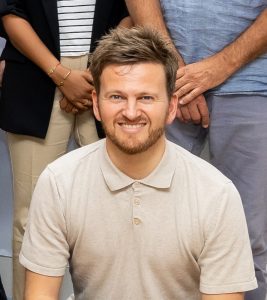Imagine someone has an idea for a new business venture: to investigate it’s feasibility, you need to analyze the market context by meeting the actors involved to understand their views. This type of investigation is often time consuming and suggested interventions are all too often not properly implemented. They might even be criticized by the actors involved! We have all experienced this at least once in our careers. It can be frustrating when your work doesn’t materialize in concrete action.
To tackle this challenge try creating a trend map. Trend mapping is a participatory facilitation tool you can use to better understand a system like the market context of a new business idea. It can then be used to inform recommendations and next steps. It is part of the Future Search Methodology! Trend mapping can be used in combination with other tools like actor mapping, which we discussed in a previous Expert Bite. The foundation of trend mapping is gathering all the actors together from the very start and giving them room to share their perspectives openly. The trend mapping tool helps gather actors’ valuable insights, build relationships and stimulate commitment to shared priorities at the same time!
What is a trend?
Trends can be described as both ‘opportunities’ and ‘threats’. The word ‘trend’ is a neutral term for an external influence; a factor largely outside the control of an entrepreneur or business partnership, but which may be influential and should be accounted for. Using this neutral framing has two benefits:
- It prevents lengthy discussions between actors regarding what exactly is an opportunity or threat, and for whom.
- It supports actors in entering a more diagnostic and constructive mindset.
Before engaging in a trend mapping session, explain the concept using concrete examples of ‘trends’ that everybody will recognize. An example trend you could us is the increase in the use mobile phones for banking and financial transactions. When using a language other than English, reflect upon the right translation of ‘trend’ before you begin!
So, how does trend mapping work?
A trend map grows from a business idea – which is written down and circled at the centre of a large sheet of paper. As facilitator, you ensure the business idea is clear to all actors participating. If you make sure everyone in the room has a good understanding of the business idea this creates excitement and a feeling that everyone can take part.
The whole group then brainstorms together to identify trends that could affect the success of the business idea. Throughout the discussion you note down each identified trend along multicolored lines radiating outwards from the circle. Trends can branch directly from the business idea or from each other depending on how the group sees their interaction. Once the group feels they have identified all the main trends affecting the business idea each person should individually determine which trends they would prioritize. In sub-groups of actor types participants can then discuss which trends a more important and how to address them. As a whole group the participants should share their findings before voting anonymously to determine which trends are most important. This often reveals to the group that they are concerned about similar trends and so helps to create common ground!
Trend mapping as a facilitation tool is explained and practiced during iCRA’s Making Agribusiness Work course. Are you interested in what this course can offer you? Check the course information on our website.


